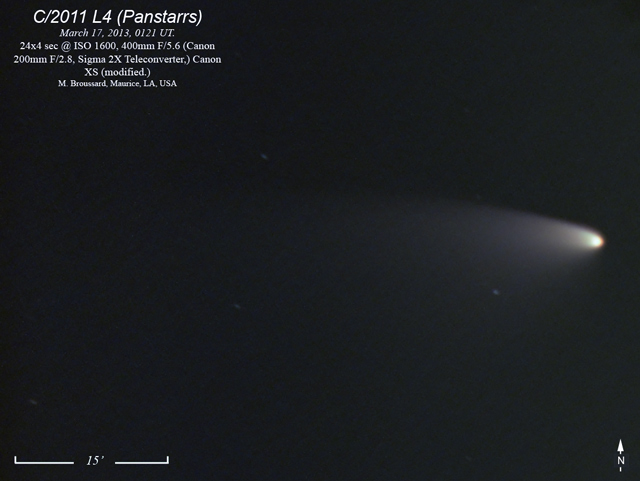
A more formal presentation of the image data I captured the evening of March 16, 2013 (Mar 17, UT.)
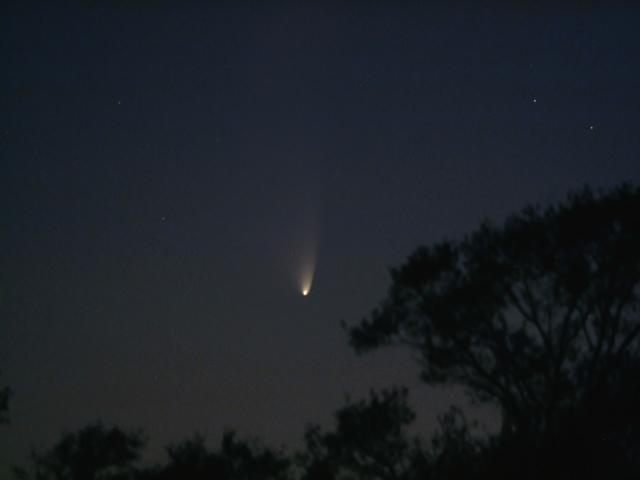
This image of the comet was a lucky catch between cloud bands. There’s still some haze even in this shot, but you can see the comet and its tail well enough to make it worthwhile. I took a quite a few images, but most had clouds in it. The few that had the least clouds around the comet I copied just the comet and blended it in as a luminosity layer in PS.
So, the comet parts of 4 other 4-sec images, 15 other 2-sec images and a base 4-sec image is what I had and I did what I could to make it half-presentable. I could have totally scratched and not got anything, so I’m pretty happy with just this. Clouds are predicted for the next few days, so this might have been my last image of the comet until the moon is out of the sky.
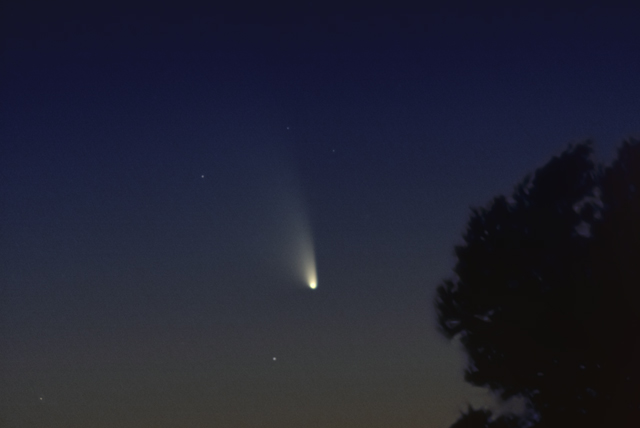
This was probably the last night without significant interference from the Moon for Comet Panstarrs. I took advantage of the exceptionally clear evening and decided that I’d give it another go before moonlight washes it out. This base image was in the second to last set I shot this evening and I decided it looked photogenic enough to post. I took 40 x 4 second sub-images and stacked them and then overlayed the results of that on the base image to create this final image.
The above image was generated with data from 40 sub-images, calibrated and stacked in IRIS. It shows the extent of the tail better with more time. Once the comet is out of the twilight, the true tail length will hopefully be visible.
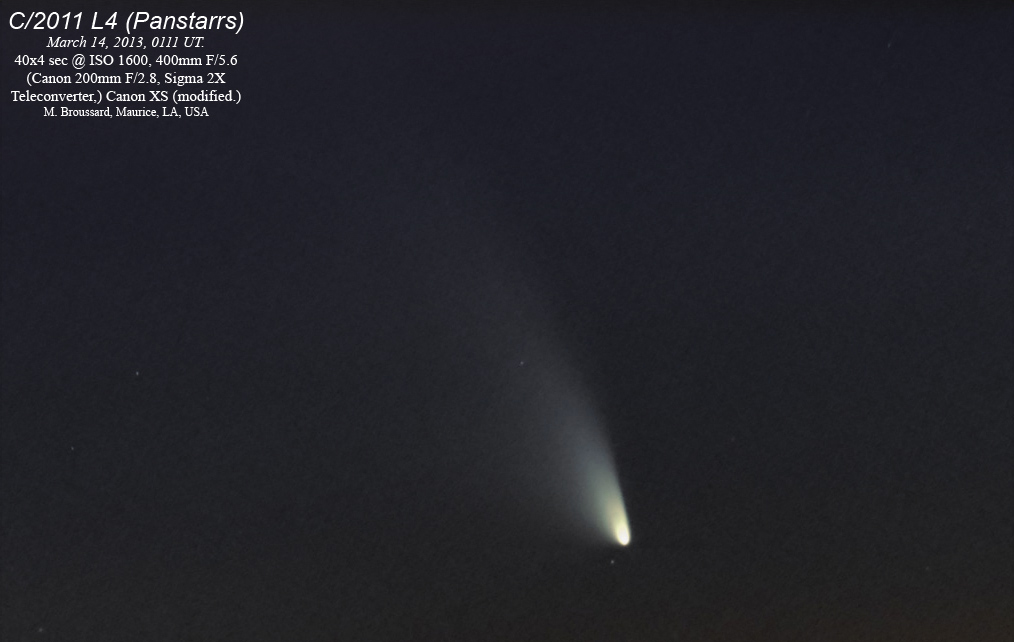
This is the same data as the first picture but close-cropped and the background color gradients neutralized. I was hoping it would show maybe a smidgen more tail than the first image in this version.
One more image follows:
I made an animated GIF of the comet and moon diving towards the horizon. There’s 30 images that make up the loop. Click here or the reduced animation image below to see it.
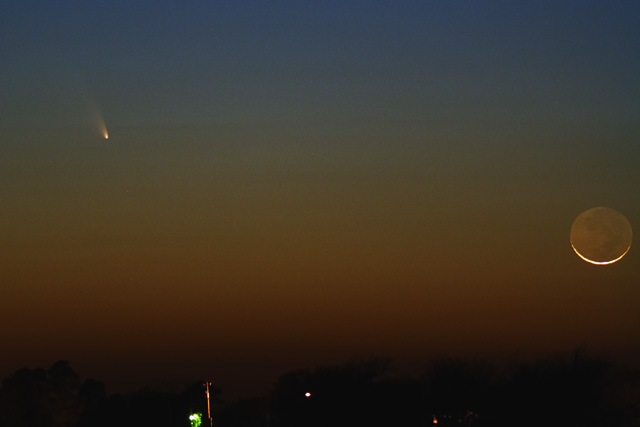
Possibly the most photogenic part of Comet Panstarrs apparition occurred on March 12, 2013 and luckily, I had clear weather. I took a number of images, all with a Canon 200mm at F/2.8, a Canon XS (modified) and my little CG3 mount and a laptop. This particular image is a 2 second exposure at ISO 800.
Continue reading Comet Panstarrs & The Moon – March 12th, 2013
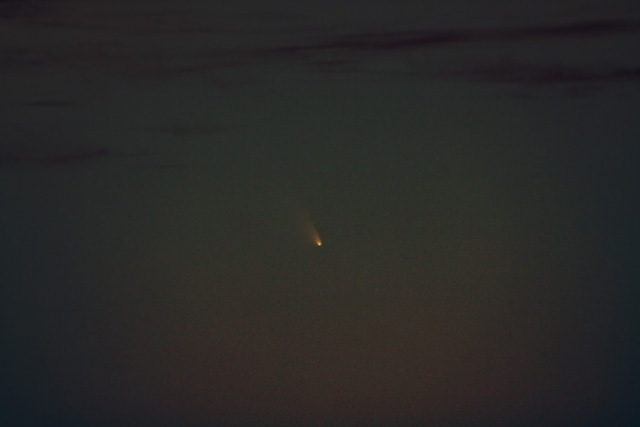
Here’s one of the first images from the batch of images I shot of Comet Panstarrs on March 11, 2013. I used a 200mm F/2.8 Canon lens with a Sigma 2X Teleconverter, for 400mm of focal length at F/5.6. This was a 1 second exposure @ ISO 400. The camera was riding on an old German Equatorial mount (a CG3 clone) with a clock drive.
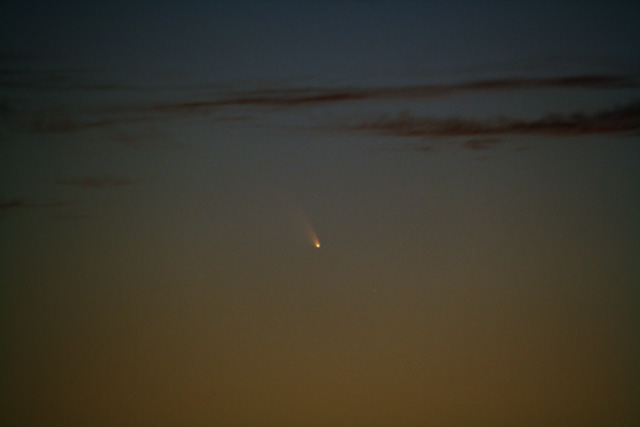
Comet Panstarrs with a 2 second exposure @ ISO 400, Canon 200mm F/2.8 w/Sigma 2X Teleconverter, Canon XS (modified) DSLR.
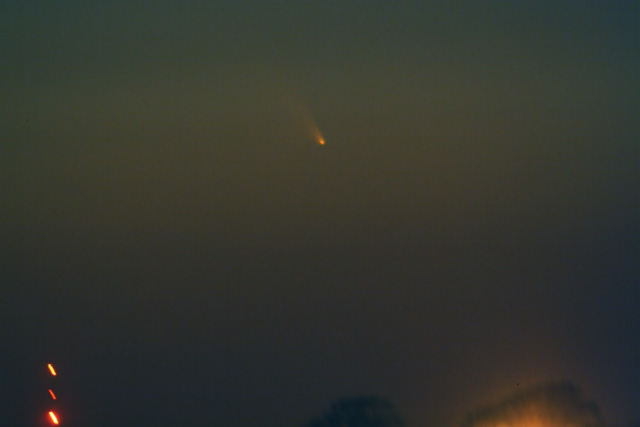
Here’s one of the last shots before the comet sank into the murk. I couldn’t even see it anymore with the binoculars, but the camera picked it up with a 10 second exposure.